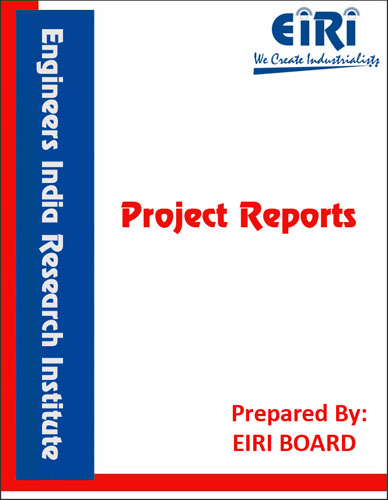The project report includes Present Market Position and Expected Future Demand, Market Size, Statistics, Trends, SWOT Analysis and Forecasts. Report provides a comprehensive analysis from industry covering detailed reporting and evaluates the position of the industry by providing insights to the SWOT analysis of the industry.
India is the fourth largest producer of agrochemicals globally, after United
States, Japan and China. The agrochemicals industry is a significant industry
for the Indian economy. The Indian agrochemicals market grew at a rate of 11%
from USD 1.22 billion in FY08 to an estimated USD 1.36 billion in FY09. India’s
agrochemicals consumption is one of the lowest in the world with per hectare
consumption of just 0.58 Kg compared to US (4.5 Kg/ha) and Japan (11 Kg/ha). In
India, paddy accounts for the maximum share of pesticide consumption, around
28%, followed by cotton (20%). Indian population is increasing and the per
capita size of land decreasing, the use of pesticides in India has to improve
further. Besides increasing in domestic consumption, the exports by the Indian
Agrochemicals Industry can be doubled in the next four years if proper
strategies and sophisticated technologies are adopted by the industry.
Industry Structure………
In India, there are about 125 technical grade manufacturers (10
multinationals), 800 formulators, over 145,000 distributors. 60 technical grade
pesticides are being manufactured indigenously. Technical grade manufacturers
sell high purity chemicals in bulk (generally in drums of 200-250 Kg) to
formulators. Formulators, in turn, prepare formulations by adding inert
carriers, solvents, surface active agents, deodorants etc. These formulations
are packed for retail sale and bought by the farmers.
The Indian agrochemicals market is characterized by low capacity utilization.
The total installed capacity in FY09 was 146,000 tons and total production was
85,000 tons leading to a low capacity utilization of 58%. The industry suffers
from high inventory (owing to seasonal & irregular demand on account of
monsoons) and long credit periods to farmers, thus making operations ‘working
capital’ intensive.
India due to its inherent strength of low-cost manufacturing and qualified
low-cost manpower is a net exporter of pesticides to countries such as USA and
some European & African countries. Exports formed ~50% of total industry
turnover in FY08 and have achieved a Compounded Annual Growth Rate (CAGR) of
29% from FY04 to FY08.
Key Segments……
Insecticides: Insecticides are used to ward off or kill insects. Consumption of
insecticides for cotton has come down to 50% from 63% of total volume after
introduction of BT cotton.
Fungicides: Fungicides are used to control disease attacks on crops. The
growing horticulture market in India owing to the government support has given
a boost to fungicide usage. The market share of fungicides has increased from
16% in 2004 to 20% in 2009.
Herbicides: Herbicides are the fastest growing segment of agrochemicals. Their
main competition is cheap labor which is employed to manually pull out weeds.
Sales are seasonal, owing to the fact that weeds flourish in damp, warm weather
and die in cold spells.
Bio-pesticides: Bio-pesticides are pesticides derived from natural substances
like animals, plants, bacteria and certain minerals. Currently a small segment,
biopesticides market is expected to grow in the future owing to government
support and increasing awareness about use of non-toxic, environment friendly
pesticides.
Others: Plant growth regulators, Nematocides, Rodenticides, Fumigants etc.
Rodenticides and plant growth regulators are the stars of this segment.
INTRODUCTION
SPECIFICATION OF SULPHUR 80% WDG
PROPERTIES AND APPLICATION OF SULPHUR 80% WDG POWDER
MARKET SURVEY
EXPORT DATA OF SULPHUR 80% WDG
PRESENT MANUFACTURERS OF SULPHUR 80% WDG
& SULPHUR 90% WDG POWDER
FORMULATION OF SULPHUR 80% WDG POWDER
FORMULATION OF SULPHUR 90% WDG POWDER
MANUFACTURING PROCESS OF SULPHUR WDG POWDER
PROCESS FLOW DIAGRAM
TESTING METHOD FOR WATER DISPERSIBLE POWDER
MATERIEL SAFETY DATA SHEET FOR SULPHUR 90% WDG
MATERIEL SAFETY DATA SHEET FOR SULPHUR 80% WDG
NOVEL WATER DISPERSIBLE GRANULAR COMPOSITION
GRINDING OF SULFUR
WETTING AGENT
FLOW DIAGRAM
MANUFACTURING METHODS OF WDG
PROCESSING DETAILS OF SULPHUR 90% WDG
SUPPLIERS OF PLANT AND EQUIPMENTS
ADDRESSES OF RAW MATERIALS
APPENDIX – A:
1. COST OF PLANT ECONOMICS
2. LAND & BUILDING
3. PLANT AND MACHINERY
4. FIXED CAPITAL INVESTMENT
5. RAW MATERIAL
6. SALARY AND WAGES
7. UTILITIES AND OVERHEADS
8. TOTAL WORKING CAPITAL
9. COST OF PRODUCTION
10. PROFITABILITY ANALYSIS
11. BREAK EVEN POINT
12. RESOURCES OF FINANCE
13. INTEREST CHART
14. DEPRECIATION CHART
15. CASH FLOW STATEMENT
16. PROJECTED BALANCE SHEET



